Atlanta History Center collects, preserves, and provides free public access to historic documents, photographs, and other material preserving the stories of African Americans in Atlanta.
Selected as a sample from the collections of Kenan Research Center, the photography in this display reflects the rich stories of Atlanta’s historically black colleges and universities, the Civil Rights Movement, and those of African American educators, entertainers, and athletes.
Discover more photographs.
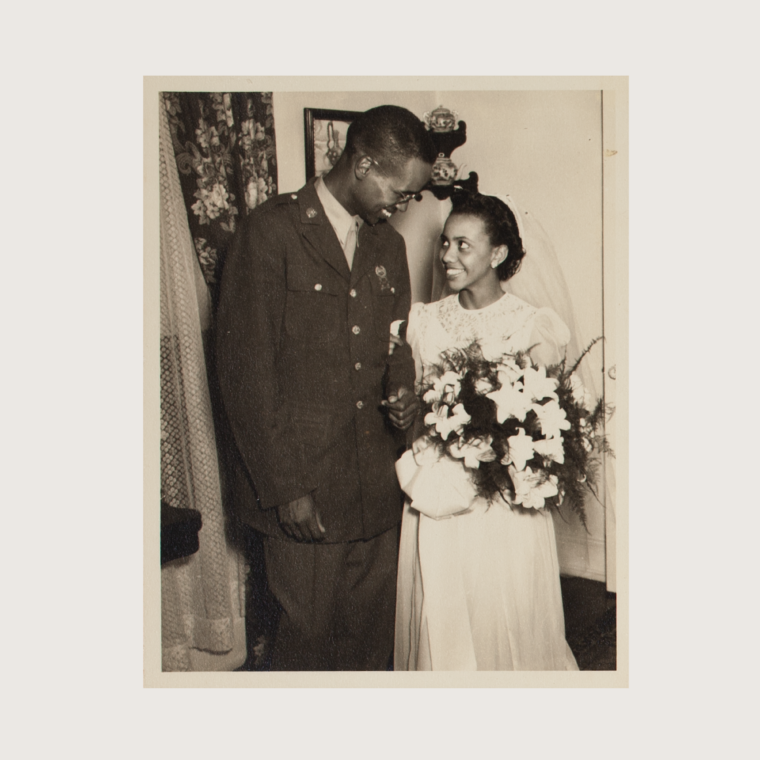
Davis-Cooper Wedding, 1944
A newlywed couple identified only by their last names enjoy a moment together after their wedding ceremony in Atlanta. The groom was one of more than two and half million African Americans who served his country in World War II.
Unidentified photographer, Atlanta, 1944. Kenan Research Center at Atlanta History Center. Long, Rucker, and Aiken Family Photographs and Lithographs.
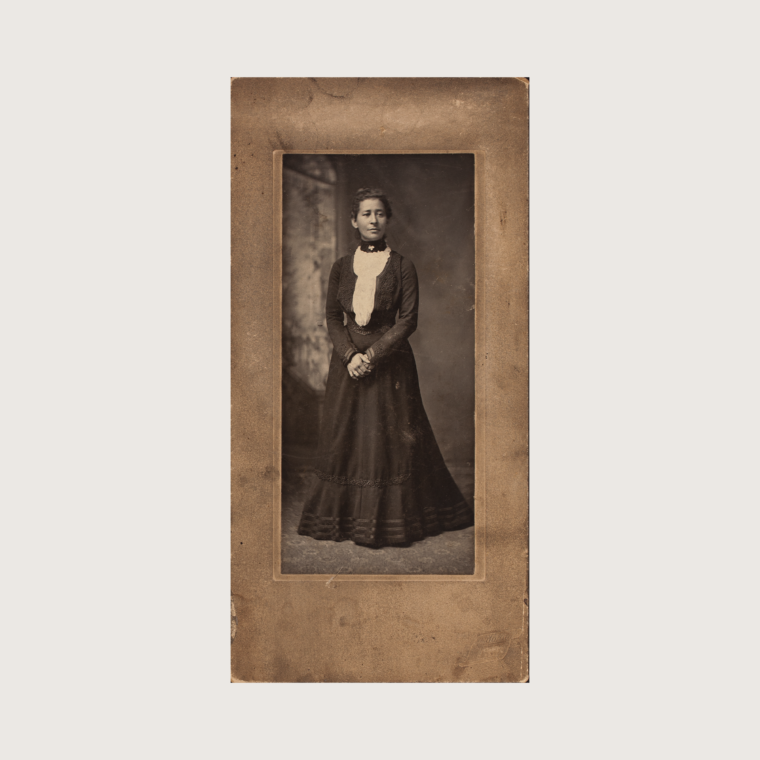
Selena Sloan Butler, circa 1895
Selena Sloan Butler was the founder and president of the National Congress of Colored Parents and Teachers Association, the nation’s first black parent-teacher association. Butler established the organization at Yonge Street Elementary School in Atlanta. In 1964, the Black parents and teachers association merged with the white National Parent Teacher Association. Today, she is recognized as one of the founders of the national Parent Teacher Association.
Unidentified photographer, Atlanta, circa 1895. Kenan Research Center at Atlanta History Center. Long, Rucker, and Aiken Family Photographs and Lithographs.
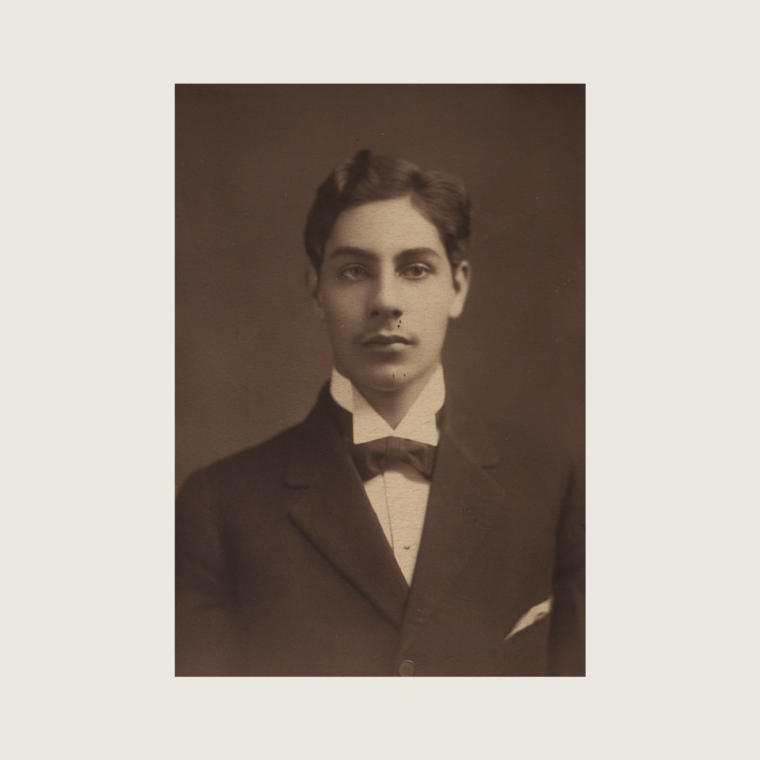
Maynard Holbrook Jackson Sr., circa 1920
Reverend Maynard Holbrook Jackson Sr. was minister at Friendship Baptist Church in Atlanta where he delivered sermons from 1945 until 1952. Jackson came to Atlanta from Dallas, Texas, where he was active in civic and political life, working to end voter suppression toward African Americans, such as the white primary and poll tax. He and his wife Irene Dobbs Jackson had six children, among them Maynard H. Jackson Jr., who served three terms as mayor of Atlanta.
Unidentified photographer, Atlanta, circa 1920. Kenan Research Center at Atlanta History Center. Long, Rucker, and Aiken Family Photographs and Lithographs.
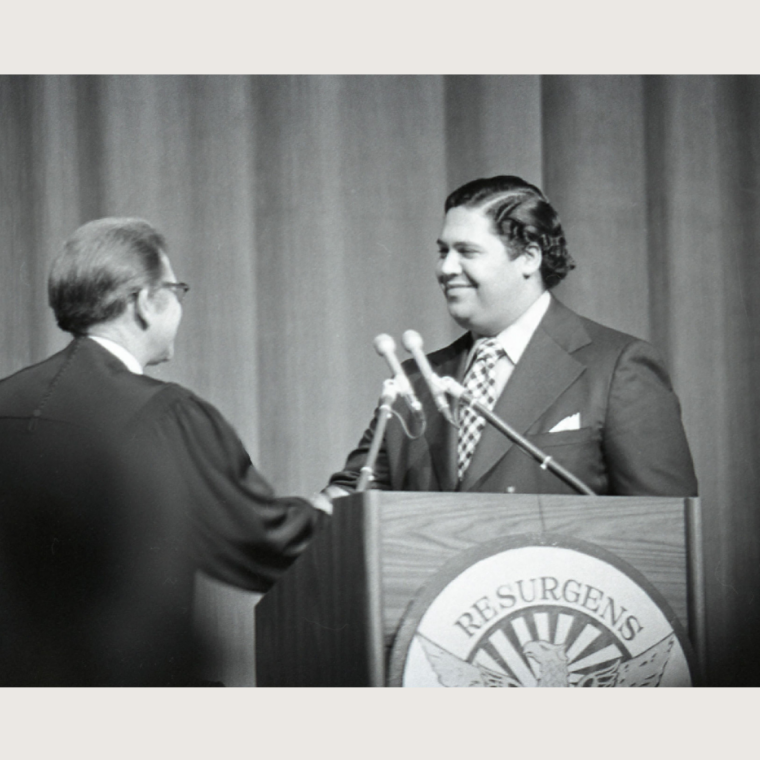
Mayoral Inauguration of Maynard H. Jackson Jr., 1974
Maynard H. Jackson Jr. was the 47th mayor of Atlanta and the youngest person to have held the office. As the first African American mayor of any large Southern city, Jackson established greater equity and fairness by increasing the percentage of city contracts awarded to minority-owned businesses from less than 1 % to 35%. He presided over the construction of a new terminal at Hartsfield Atlanta International Airport, which was later named Hartsfield-Jackson Atlanta International Airport in his honor.
Boyd Lewis, photographer, 1974. Kenan Research Center at Atlanta History Center. Boyd Lewis Photographs.
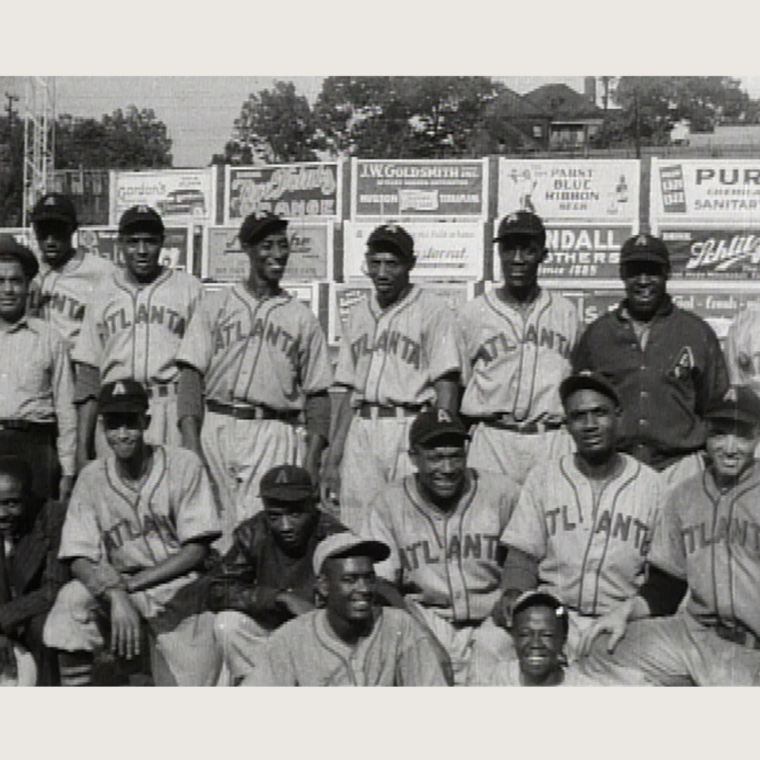
Atlanta Black Crackers Baseball Team, Ponce de Leon Park, 1938
Formerly known as the Atlanta Cubs, the Atlanta Black Crackers took its name from its white Southern Association counterpart. The Black Crackers often included the best players taken from Atlanta’s historically black colleges and universities, including Morehouse College, Morris Brown College, and Clark College, as well as from neighborhood baseball teams. The team disbanded shortly after Jackie Robinson desegregated Major League Baseball in 1947.
Joseph Richardson Jones, photographer, 1938. Kenan Research Center at Atlanta History Center. Joseph Richardson Jones Film.
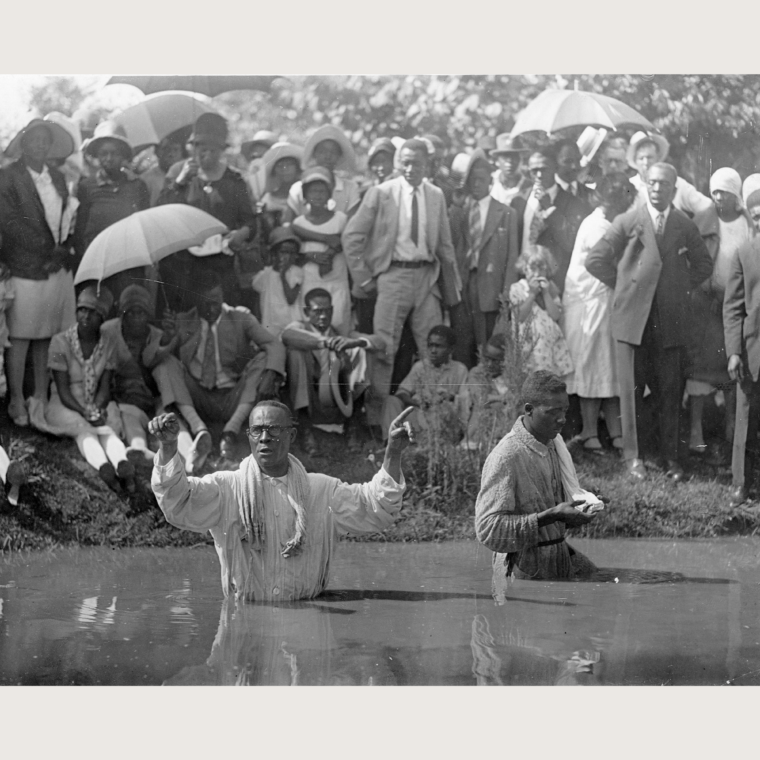
Baptism Ceremony, undated
A minister speaks to an assembled crowd at a pond to witness a convert into the Christian faith. Outdoor baptisms featuring immersions in ponds and lakes were common occurrences in Georgia and throughout the South up through the 1950s.
Unidentified photographer, Atlanta, undated. Kenan Research Center at Atlanta History Center. Long, Rucker, and Aiken Family Photographs and Lithographs.
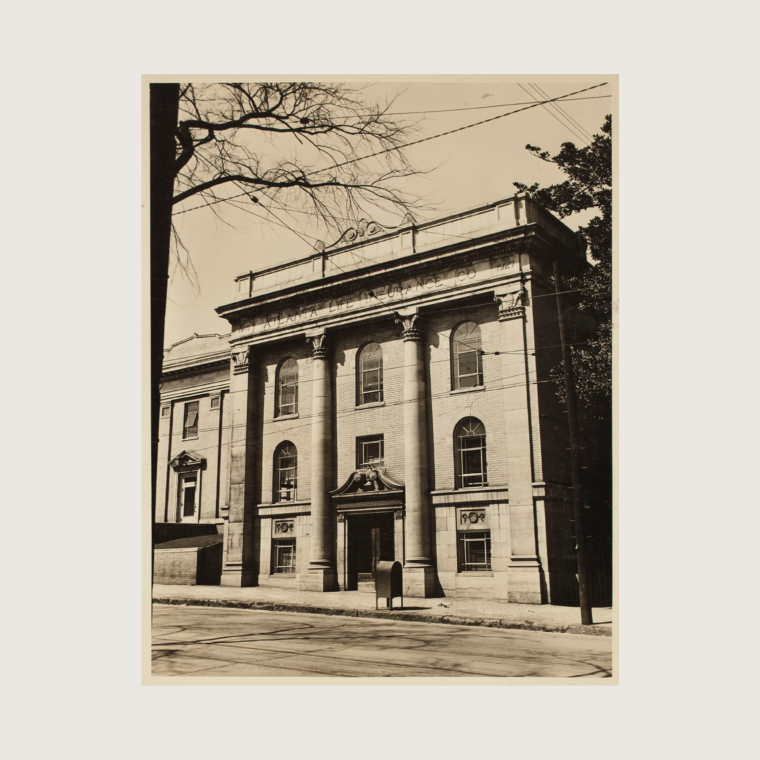
Atlanta Life Insurance Company Building, Auburn Avenue, circa 1940
Founded in 1905 by Alonzo Herndon, a former slave who also owned a chain of barbershops, Atlanta Life Insurance Company emerged as a vital cog in the economic engine of Black Atlanta, and throughout the country. The corporate office on 148 Auburn Avenue was built in 1920 and is listed on the National Register of Historic Places.
Unidentified photographer, Atlanta, circa 1940. Kenan Research Center at Atlanta History Center. Long, Rucker, and Aiken Family Photographs and Lithographs.
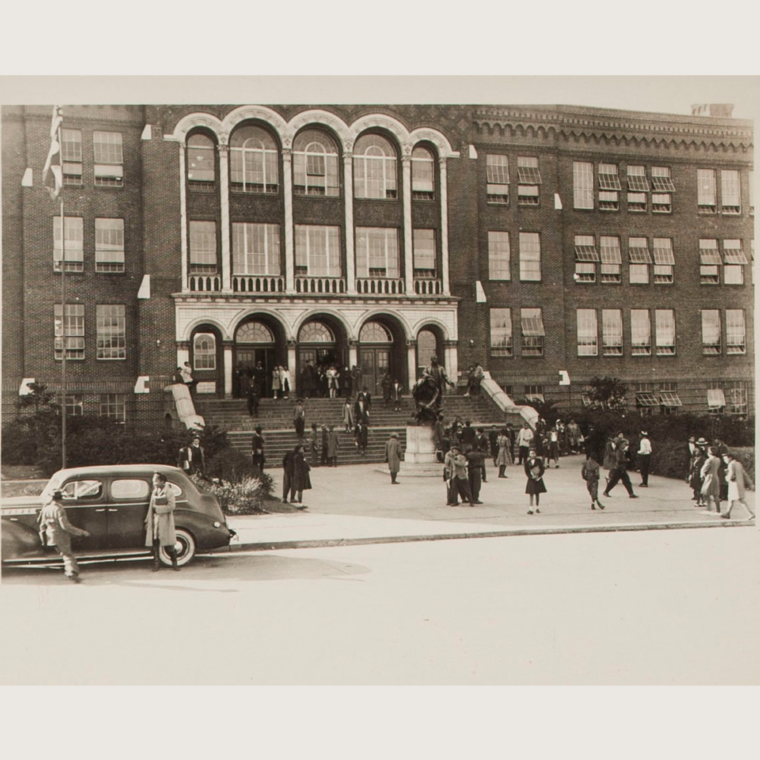
Booker T. Washington High School
After decades of promises by the city of Atlanta to establish a public high school for African American students, Black voters were instrumental in passing a school bond that established Booker T. Washington High School in 1921. Prior to its opening in 1924, African American students enrolled in the high school departments offered by colleges and universities of the Atlanta University Center.
Located in the Ashview Heights neighborhood and named for the famed educator, the school has produced notable alumni, such as Dr. Martin Luther King Jr., actor Lena Horne, and Dr. Louis Sullivan. Sullivan served as the Secretary of the U.S. Department of Health and Human Services during President George H. W. Bush’s Administration and was Founding Dean of the Morehouse School of Medicine. The high school building is listed on the National Register of Historic Places.
Unidentified photographer, Atlanta, circa 1945. Kenan Research Center at Atlanta History Center.
Long, Rucker, and Aiken Family Photographs and Lithographs.
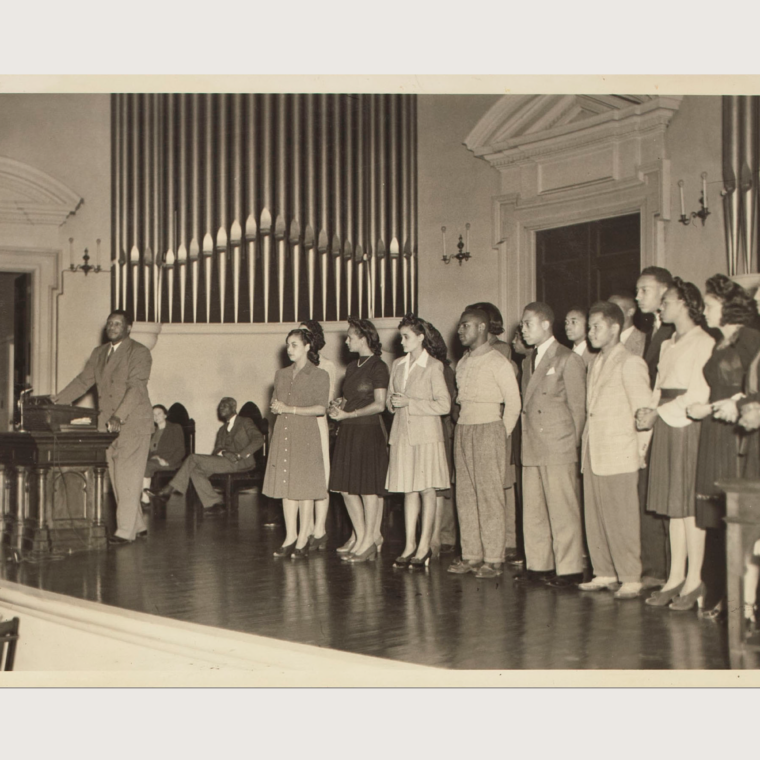
Paul Robeson at Sisters Chapel, Spelman College, 1942
Baritone singer, college football star, and political activist Paul Robeson addresses students at the colleges and universities of the Atlanta University Center at Sisters Chapel on the campus of Spelman College. Robeson, who frequently visited Atlanta, sang “Ballad of Americans” with the choirs of Morehouse and Spelman Colleges during his appearance. The song, based on themes of ethnic and religious inclusivity, was popular due to its unifying message.
Unidentified photographer, Atlanta, 1942. Kenan Research Center at Atlanta History Center. Long, Rucker, and Aiken Family Photographs and Lithographs.
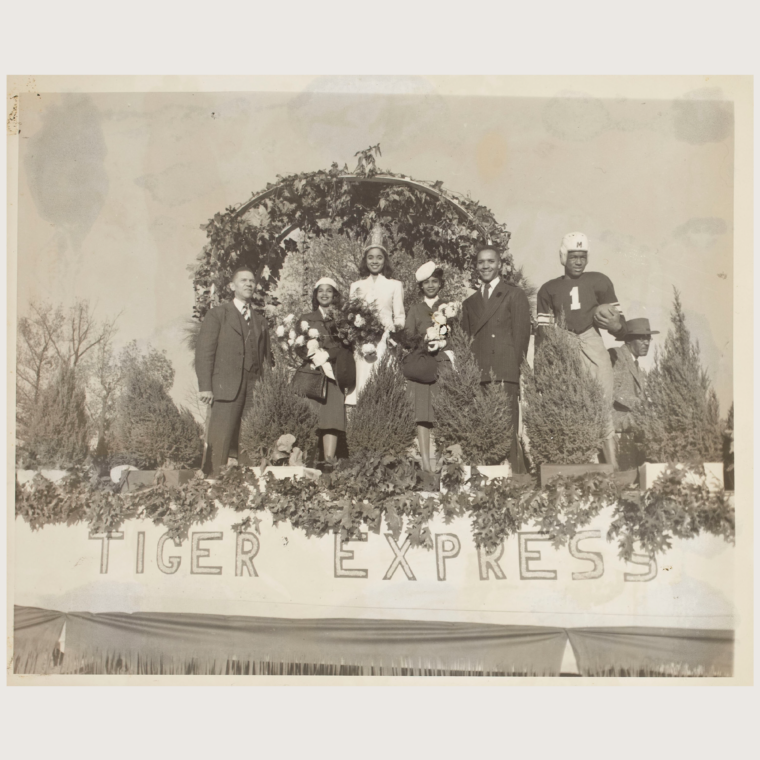
Morehouse College Homecoming, circa 1945
Unidentified members of the homecoming court, including a member of the Morehouse Tigers football team, during campus ceremonies.
Unidentified photographer, Atlanta, circa 1945. Kenan Research Center at Atlanta History Center. Long, Rucker, and Aiken Family Photographs and Lithographs.
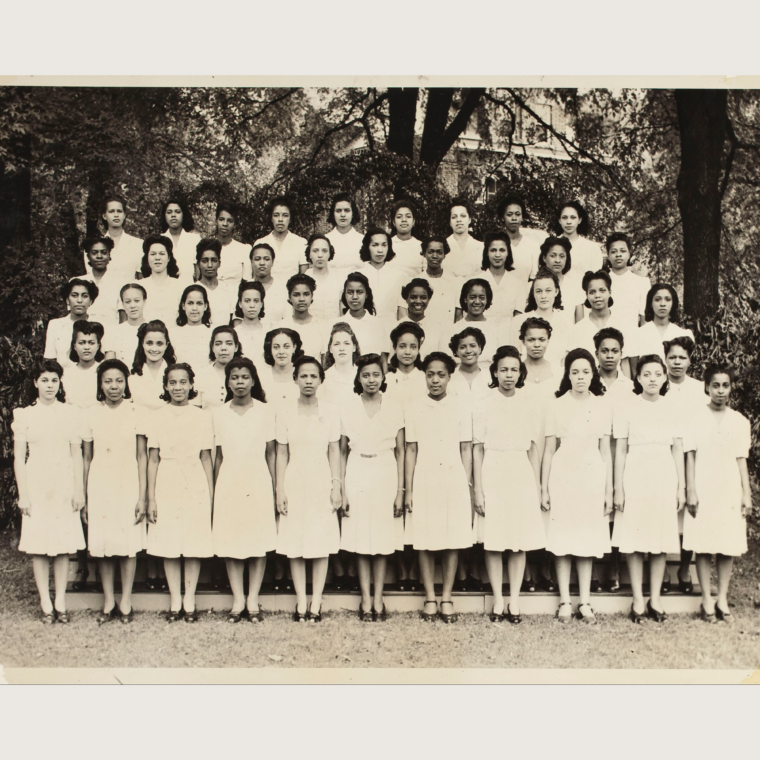
Spelman College Glee Club, 1942
Since its founding in 1881, music has played a special role in the life of the college. Students were always given opportunities to hone their talents and interests in musical instruments and performance ensembles, including Spelman’s glee club. The club regularly tours nationally and internationally. The group sang for over 3.5 billion people who watched the opening ceremonies of the 1996 Summer Olympic Games in Atlanta.
Unidentified photographer, Atlanta, 1942. Kenan Research Center at Atlanta History Center. Long, Rucker, and Aiken Family Photographs and Lithographs.
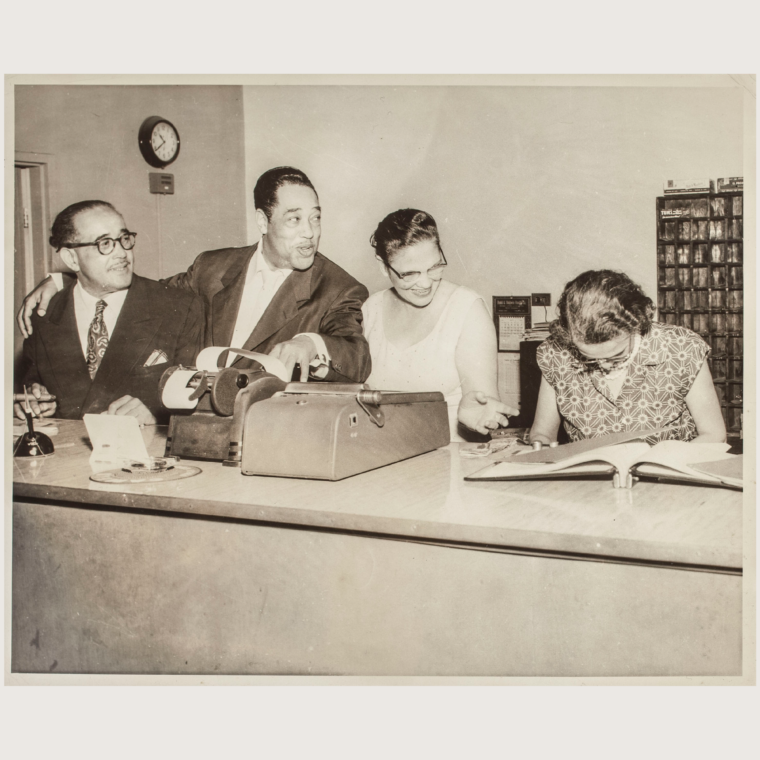
Duke Ellington in Waluhaje Apartments, circa 1950
Located in Atlanta’s West Lake Community, Waluhaje Apartments was a multi-purpose development that included apartment residences, hotel rooms, and entertainment facilities. Builder Walter Aiken (far left) named the Waluhaje by taking the first two letters of his name, and those of his wife, Lucy, and her siblings Hazel (far right) and Jefferson (not pictured). Ann Rucker is pictured second from right.
The Waluhaje hosted performing artists, such as Ellington, Ray Charles, and others, who could not secure lodging in Atlanta’s segregated hotels. The Walahaje was featured in the famous Green Book travel guides published in the 1930s through the 1960s, listing establishments where Black travelers were welcome.
Unidentified photographer, Atlanta, circa 1950. Kenan Research Center at Atlanta History Center. Long, Rucker, and Aiken Family Photographs and Lithographs.
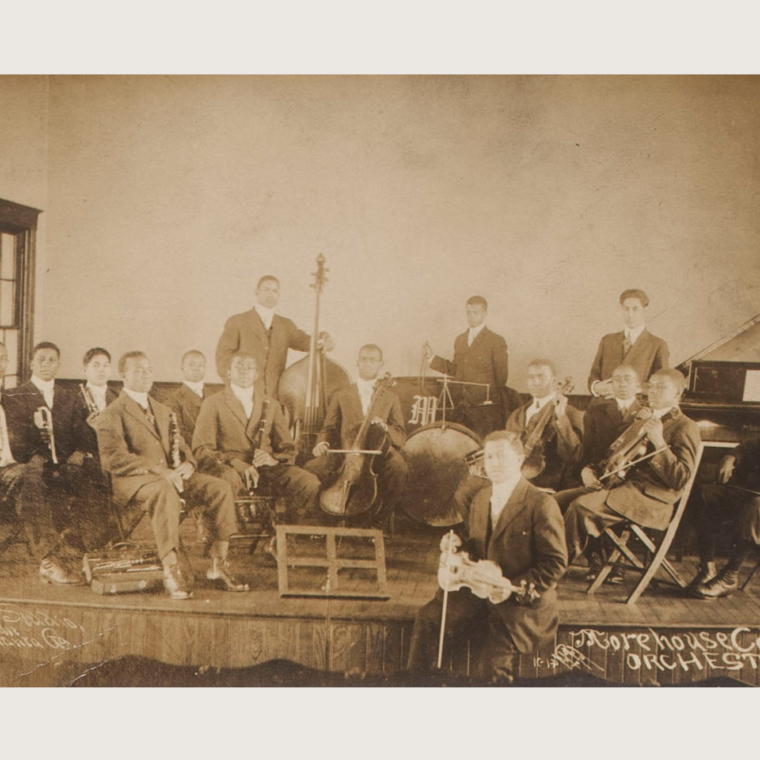
Atlanta Baptist [Morehouse] College Orchestra, circa 1900
The Music Department at Morehouse College has thrived for more than 100 years under stellar music directors. In 1911, while still known as Atlanta Baptist College, President John Hope appointed Kemper Harreld, an accomplished concert violinist as its first director of music. The Morehouse College Orchestra burnished its reputation by playing concerts throughout the country, as did the Morehouse Glee Club, which has played in more than 10 foreign countries.
Unidentified photographer, Atlanta, circa 1900. Kenan Research Center at Atlanta History Center. Long, Rucker, and Aiken Family Photographs and Lithographs.
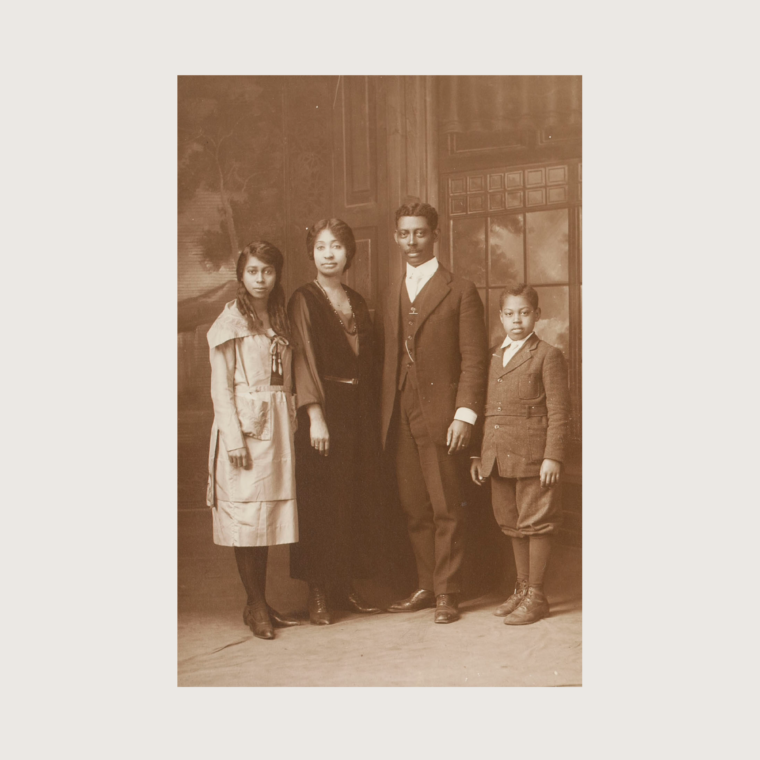
Charles Lincoln Harper and Family, 1918
Charles Harper served as the first principal of Booker T. Washington High School in Atlanta. When the school opened in 1924, it was the city’s first and only post-elementary school for African American students. Harper served as principal of Washington High School until 1942, when it became the largest Black high school in the U.S. Harper Archer Middle School is named for him.
Unidentified photographer, Atlanta, 1918. Kenan Research Center at Atlanta History Center. Long, Rucker, and Aiken Family Photographs and Lithographs.
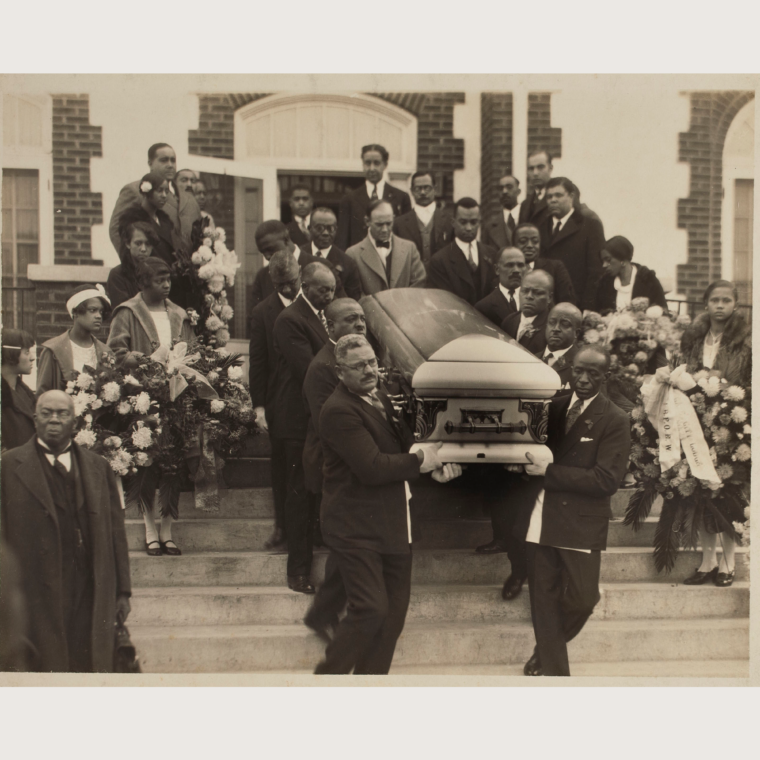
Tiger Flowers Funeral, 1927
Pallbearers carry the body of boxer Theodore “Tiger” Flowers down the steps of his Atlanta home in Washington Park. A native of southwest Georgia, he died unexpectedly in New York after surgery on his eye. Known as the “Georgia Deacon,” Tiger was a deacon for the Butler Street CME Church and a member of the Masons, Elks, and Knights of Pythias lodges. Newspapers estimated up to 75,000 people attended his funeral at Atlanta’s city auditorium. Flowers was the first Black boxer to become World Middleweight Boxing Champion.
Unidentified photographer, Atlanta, 1927. Kenan Research Center at Atlanta History Center. Long, Rucker, and Aiken Family Photographs and Lithographs.
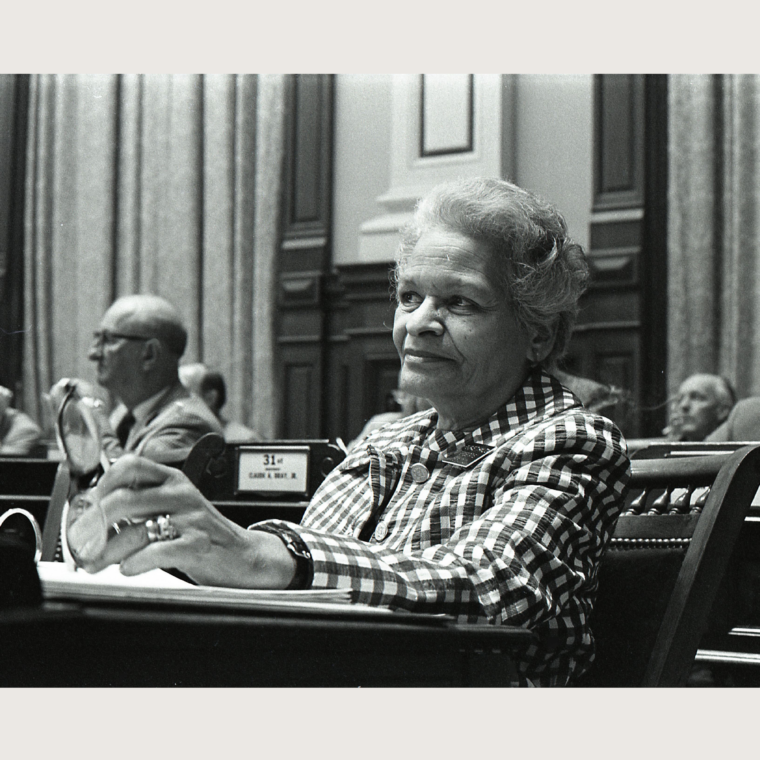
Grace Towns Hamilton, circa 1970
Vine City native Grace Towns Hamilton was the first African American woman elected to the Georgia General Assembly, serving nine consecutive terms. She sponsored a bill to rewrite the Atlanta city charter, ensuring greater Black representation in city government. Hamilton was also executive director of the Atlanta Urban League from 1943 to 1961.
Boyd Lewis, photographer, circa 1970. Kenan Research Center at Atlanta History Center. Boyd Lewis Photographs.
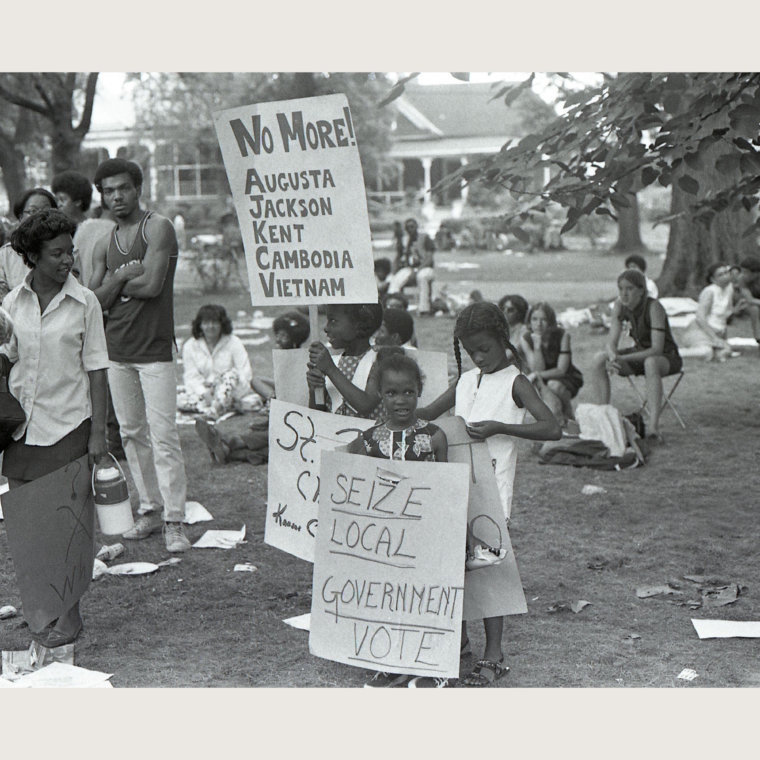
March Against Repression, May 1970
In May 1970, college students across the country held demonstrations triggered by President Richard Nixon’s escalation of the Vietnam War. Six students were killed, four by National Guardsmen at Kent State University in Ohio and two by police at Jackson State University in Mississippi. In Augusta, Georgia, six black men were shot and killed by police after a Black teenager was beaten to death in prison. Led by Coretta Scott King, the March Against Repression was a protest against the Vietnam War and state-sponsored violence.
Boyd Lewis, photographer, 1970. Kenan Research Center at Atlanta History Center. Boyd Lewis Photographs.
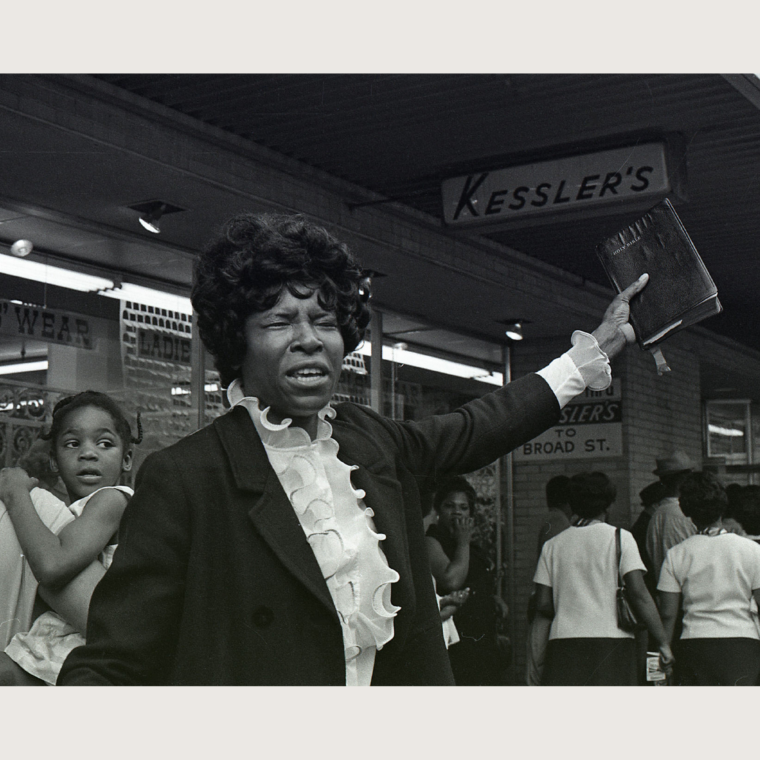
Open Air Preacher, 1972
An unidentified evangelist orates among busy shoppers in front of Kessler’s department store on Peachtree Street in downtown Atlanta.
Boyd Lewis, photographer, 1972. Kenan Research Center at Atlanta History Center. Boyd Lewis Photographs.
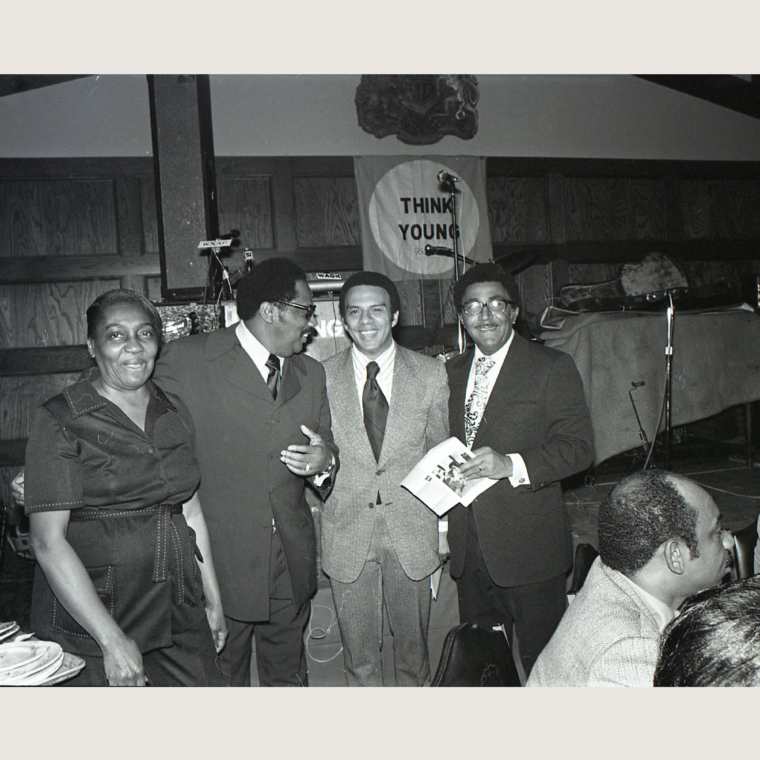
Campaign Rally for Andrew Young, 1972
Andrew Young Jr. (second from right) poses with Reverend Joseph Lowry (far right) and two unidentified people at Young’s campaign kickoff rally at the Royal Coach Hotel in Atlanta. An aide to Dr. Martin Luther King Jr., Young became the first African American elected to Congress from the Deep South since Reconstruction. Young served Georgia’s 5th Congressional District from 1973 to 1978. An ordained minister, Young was elected mayor of Atlanta in 1981 and served two terms.
Boyd Lewis, photographer. Kenan Research Center at Atlanta History Center. Boyd Lewis Photographs.
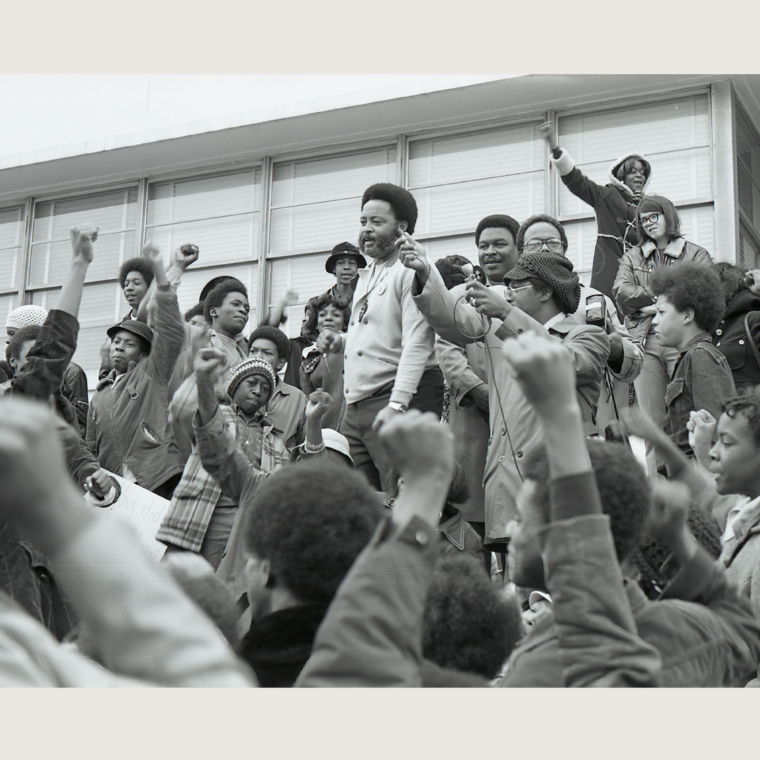
Mead Packaging Strike, 1972
Hosea Williams (center) leads a demonstration of striking workers at Mead packaging lant in Atlanta. The workers at Mead – most of them Black – held a seven-week strike against the company, alleging racial and gender discrimination, as well as harsh working conditions.
Boyd Lewis, photographer, 1972. Kenan Research Center at Atlanta History Center. Boyd Lewis Photographs.
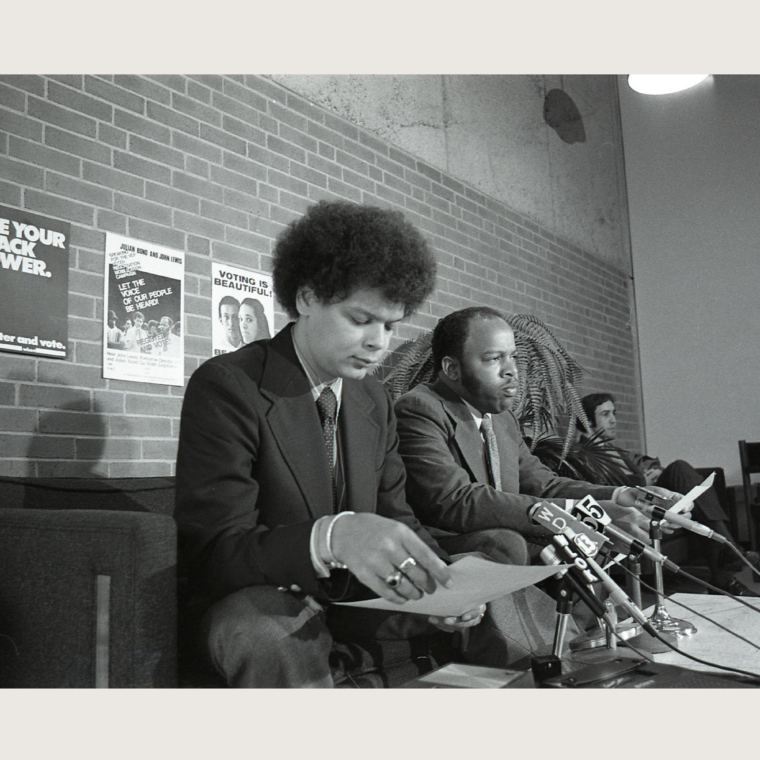
Voter Education Project Tour, 1972
Georgia State Representative Julian Bond and Voter Education Project Executive Director John Lewis sit for a press conference at Lane College in Tennessee. The two veterans of the Civil Rights Movement traveled to several Southern states during the spring of 1972 to register voters and develop the infrastructure to elect African Americans to political office. Lewis directed the Atlanta-based organization from 1970 to 1977, while Bond was a board member.
Boyd Lewis, photographer, 1972. Kenan Research Center at Atlanta History Center. Boyd Lewis Photographs.
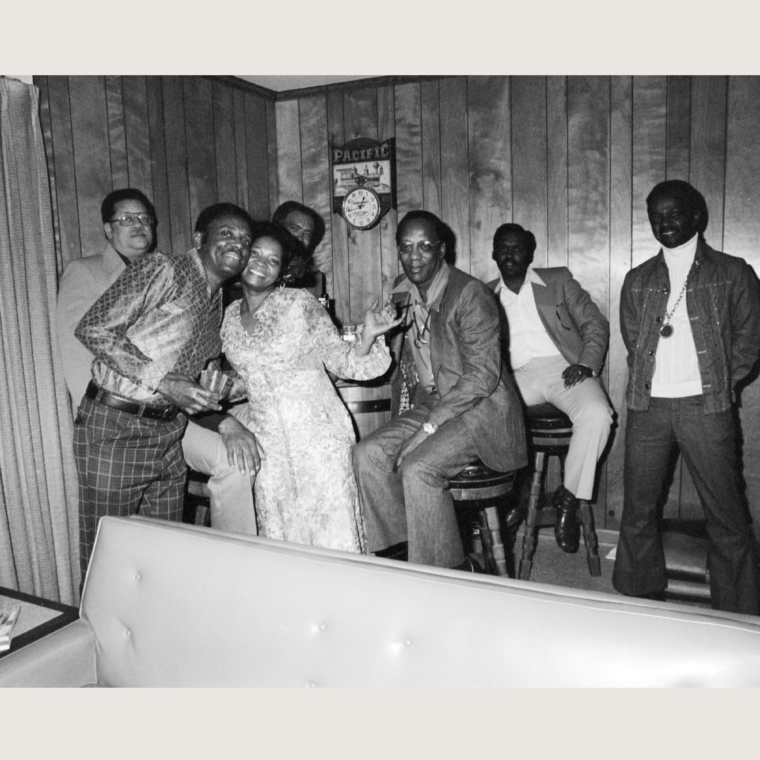
House Party, Collier Heights, 1975
Guests at a party given by Charles and Dorothy Ross on Eleanor Terrace in the Collier Heights neighborhood of Atlanta. By the early 1960s, Collier Heights was known as one of the premiere residential enclaves in the Southeast built by Black real estate developers, for Black residents.
Boyd Lewis, photographer, 1975. Kenan Research Center at Atlanta History Center. Boyd Lewis Photographs.
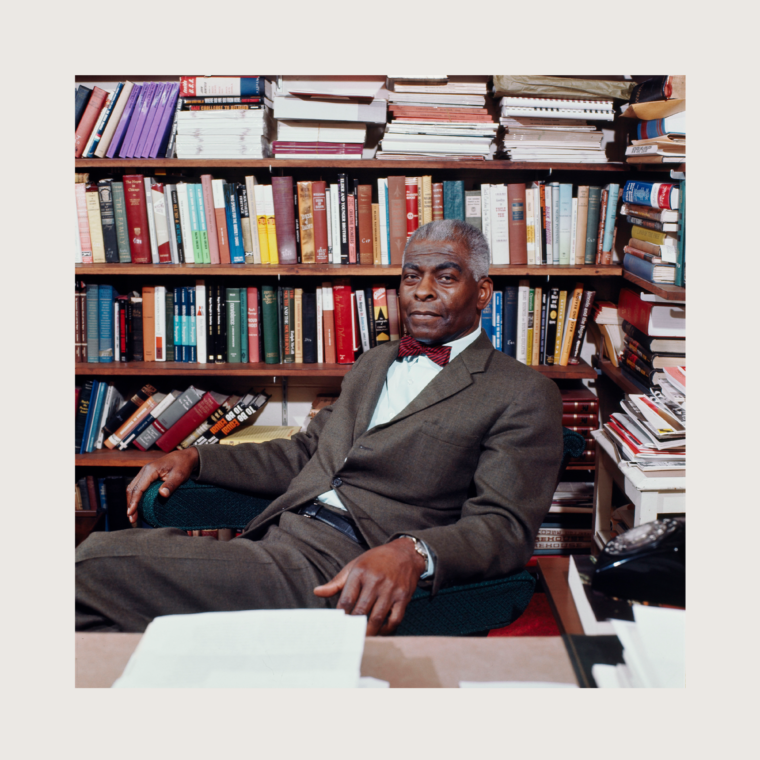
Dr. Benjamin Mays, circa 1975
Dr. Benjamin Mays was one of the towering figures in American life. An ordained minister and accomplished scholar in the field of Religion and Philosophy, Mays served as president of Morehouse College from 1940 to 1967. Known for the positive influence and inspiration he gave to his students, he was a leading advocate for the ideals of human dignity and social justice. These themes had a profound impact on Martin Luther King Jr. The two developed a lifelong bond. King invited Mays to give the benediction at the March on Washington in 1963. Dr. Mays gave the eulogy at Dr. King’s funeral.
Photographer unidentified, Atlanta, circa 1975. Kenan Research Center at Atlanta History Center. Joe McTyre Photographs.
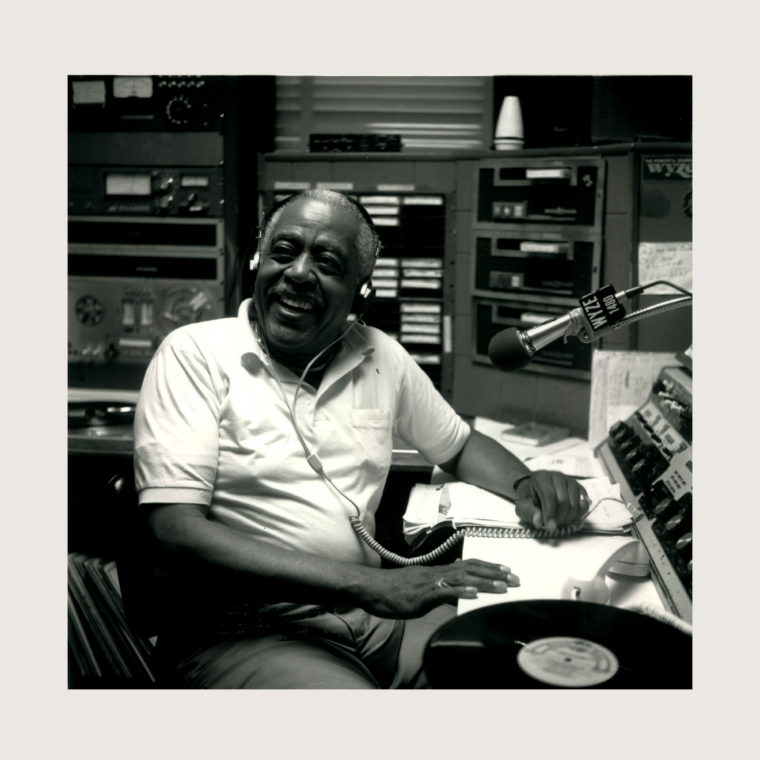
James “Ally Pat” Patrick, 1984
James Patrick, known to his radio and television audience as “Ally Pat,” was a radio disc jockey who began his career in 1951 at WERD. The station was Atlanta’s first Black-owned and Black-operated radio station. In the 1980s, he hosted a television show called Alley Pat’s Place. An inductee in the Georgia Radio Hall of Fame, Patrick was also a bail bondsman who released Martin Luther King Jr., Hosea Williams, and others during the Civil Rights Movement.
Photographer unidentified, Atlanta, 1984. Kenan Research Center at Atlanta History Center. Southline Press Photographs.
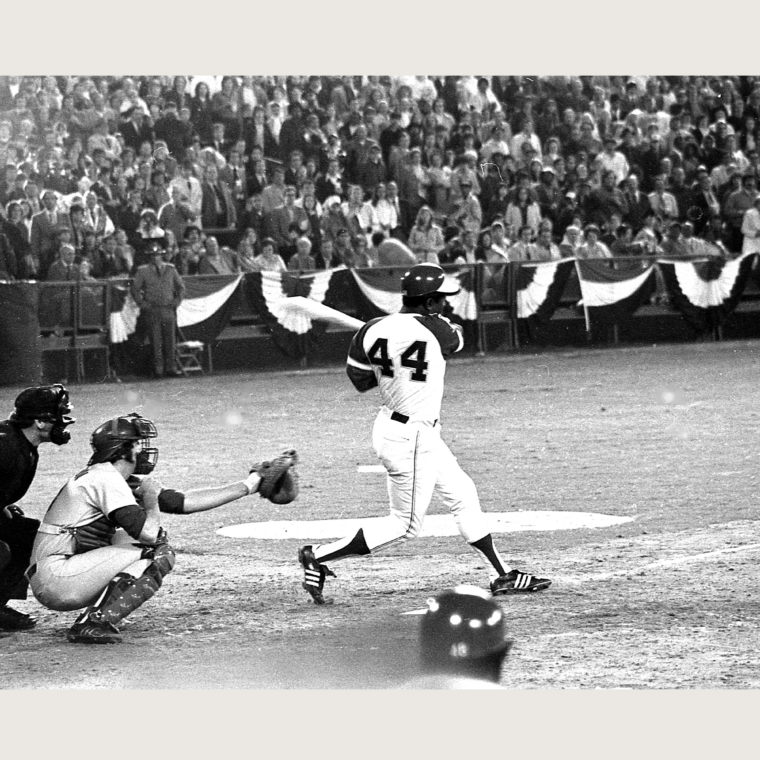
Hank Aaron Hits 715th Home Run
In what was perhaps the most legendary sports moment in Atlanta history, Atlanta Braves legend Hank Aaron’s powerful swing hits a towering shot over the left field fence at Atlanta Stadium, breaking Babe Ruth’s record of 714 career home runs. Aaron’s achievement and his impact on the Black community was illustrated by Andrew Young, when he told Aaron: “What you were doing on your end was much bigger than what we were doing on our end.”
Boyd Lewis, photographer, 1974. Kenan Research Center at Atlanta History Center. Boyd Lewis Photographs.
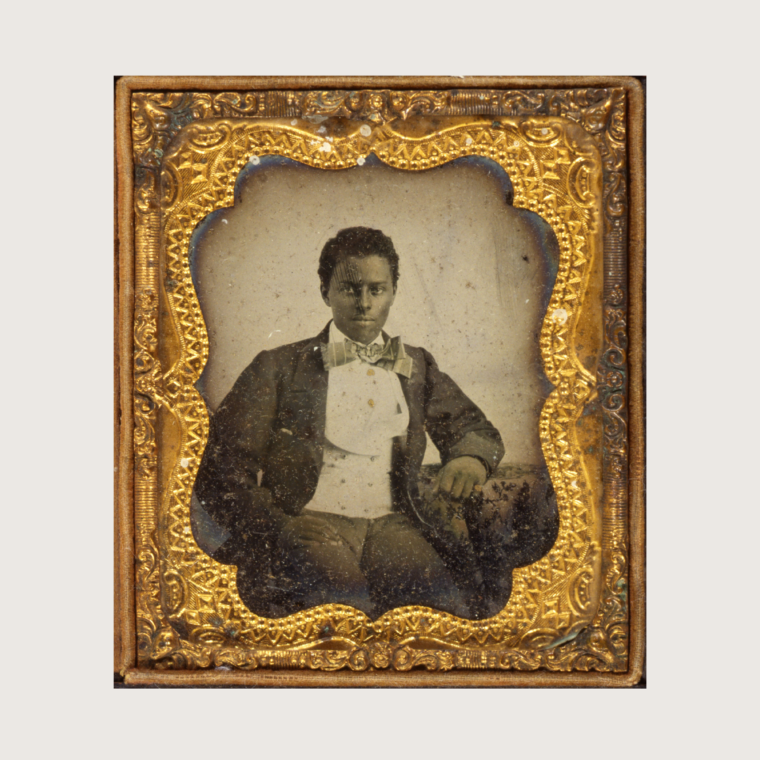
Solomon Luckie, circa 1855
Solomon Luckie, a free Black businessman, maintained his own barbershop and bathing salon in the Atlanta Hotel. He and his wife, Nancy Cunningham, were two of the approximately 40 free African Americans living in Atlanta in 1860. During the U.S. Army’s siege of Atlanta in 1864, shell fragments from the bombardment struck and killed Luckie.
Photographer unknown, Atlanta, circa 1855. Kenan Research Center at Atlanta History Center. Luckie Family Photographs.
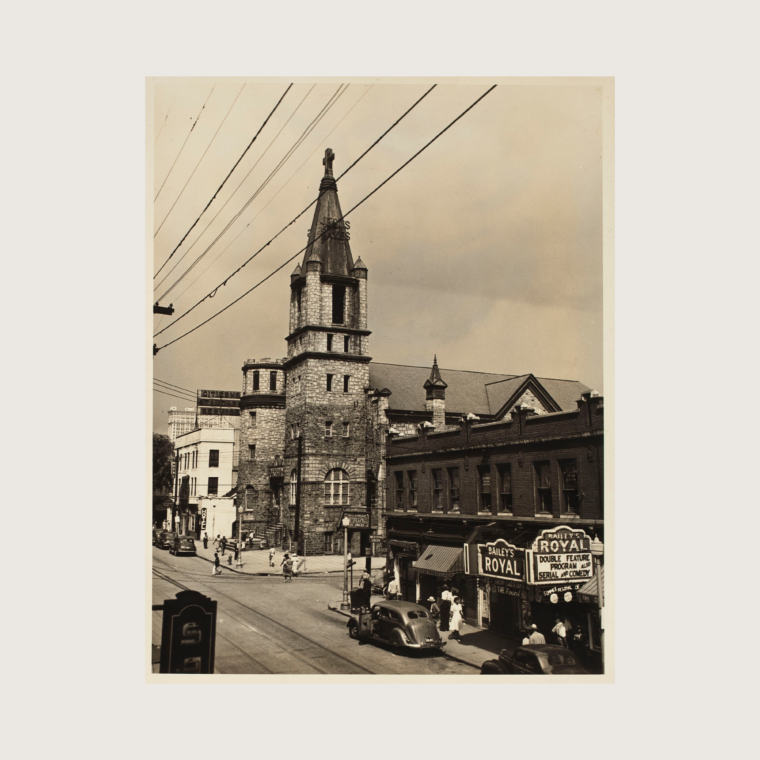
Big Bethel AME Church and Bailey’s Royal Peacock, Auburn Avenue, circa 1945
Coined “Sweet Auburn” by civic leader John Wesley Dobbs, Auburn Avenue flourished as the major center of Black commercial, social, and residential life for most of the 20th century. Forced by the constraints of segregation, African Americans established businesses, churches, newspapers, and civic organizations that were vital in the fight for social justice and equality in Atlanta.
Unidentified photographer, Atlanta, circa 1945. Kenan Research Center at Atlanta History Center. Long, Rucker, and Aiken Family Photographs and Lithographs.
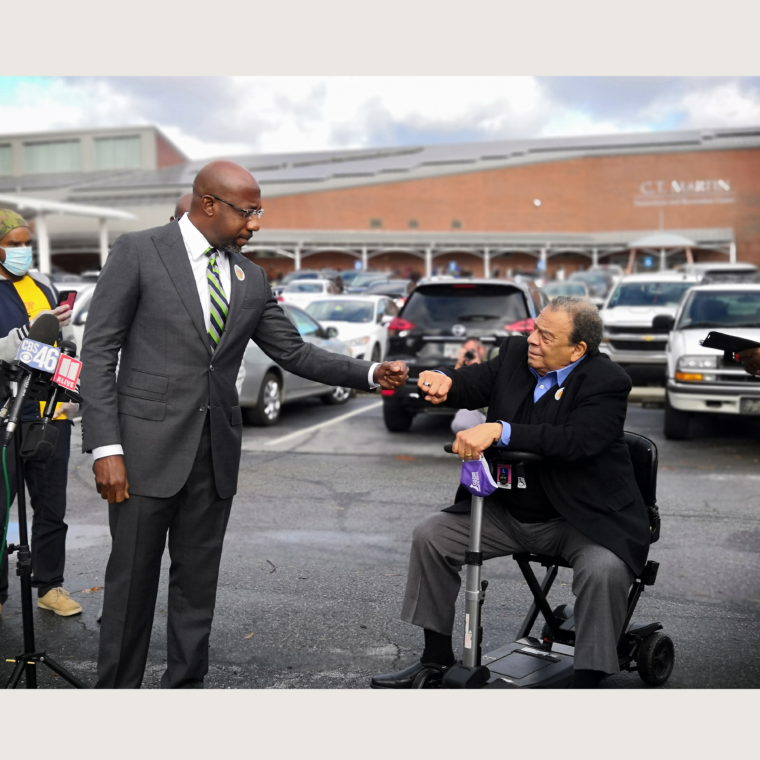
2020 U.S. Senate Runoff Election
Reverend Dr. Raphael Warnock and former Atlanta mayor and U.S. ambassador to the United Nations Andrew Young enjoy a fist bump at C.T. Martin Natatorium and Recreation Center after casting their votes in the runoff election for U.S. senator. Warnock, who is also the Senior Pastor of Atlanta’s Ebenezer Baptist Church, won the runoff election and became the first African American to represent Georgia in the Senate and the first Black Democrat to be elected to the Senate by a former state of the Confederacy since Reconstruction.
Jena Jones, photographer, 2020. Kenan Research Center at Atlanta History Center. Jena Jones Photographs
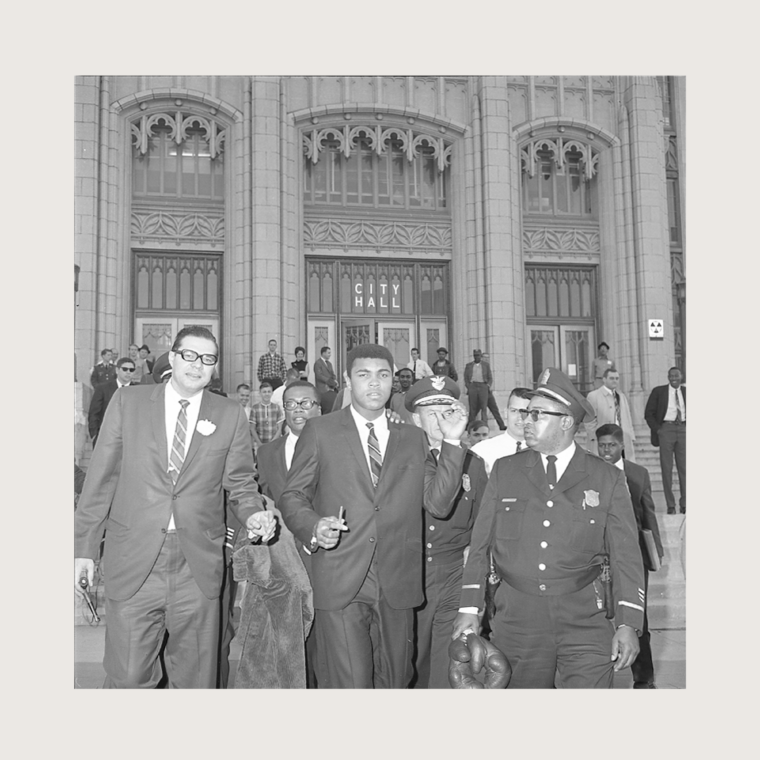
Muhammad Ali outside Atlanta City Hall, 1970
Once the reigning world heavyweight champion, Muhammad Ali was stripped of his boxing title and his license to fight for refusing to enter the draft in 1967. In 1970, Georgia State Senator Leroy Johnson helped provide Ali with the chance to fight again. “The thing that energized me was that the New York boxing commission said he’d never fight again in this country. To me that became a challenge, a challenge against the system.” Johnson secured a venue, Atlanta Municipal Auditorium, and a contract for Ali to fight Jerry Quarry. Ali easily beat Quarry and eventual regained his title in 1974.
Photographer unidentified, Atlanta, 1970. Kenan Research Center at Atlanta History Center. Joe McTyre Photographs
African Americans in Atlanta have a well-documented history of fighting for equality and justice amid persistent racism.
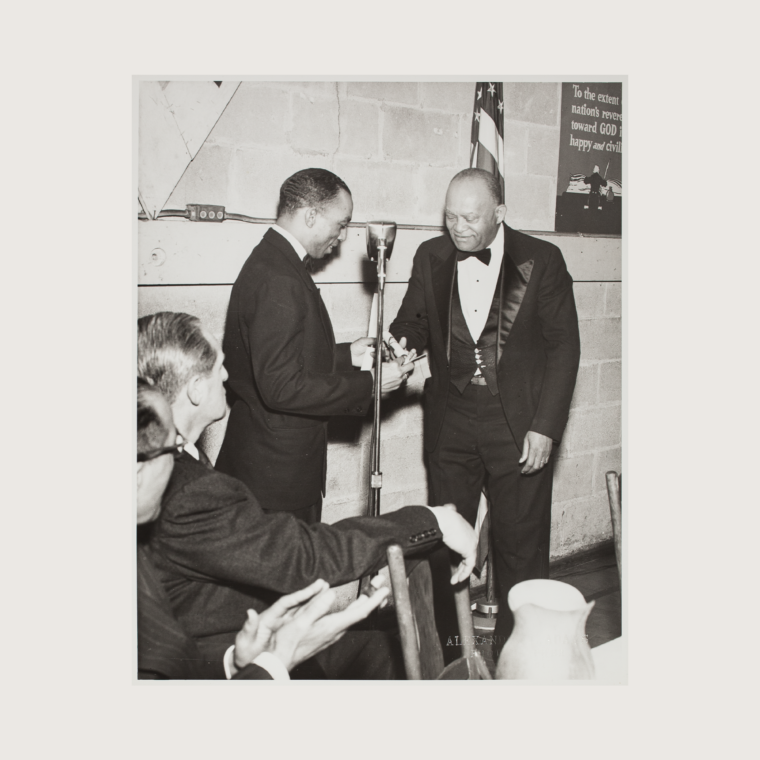
Austin T. Walden
As president of the NAACP in Atlanta, attorney Austin T. Walden long challenged discrimination in Atlanta’s courts.
Unidentified photographer, Atlanta, circa 1950. Kenan Research Center at Atlanta History Center
Long, Rucker, and Aiken Family Photographs and Lithographs.
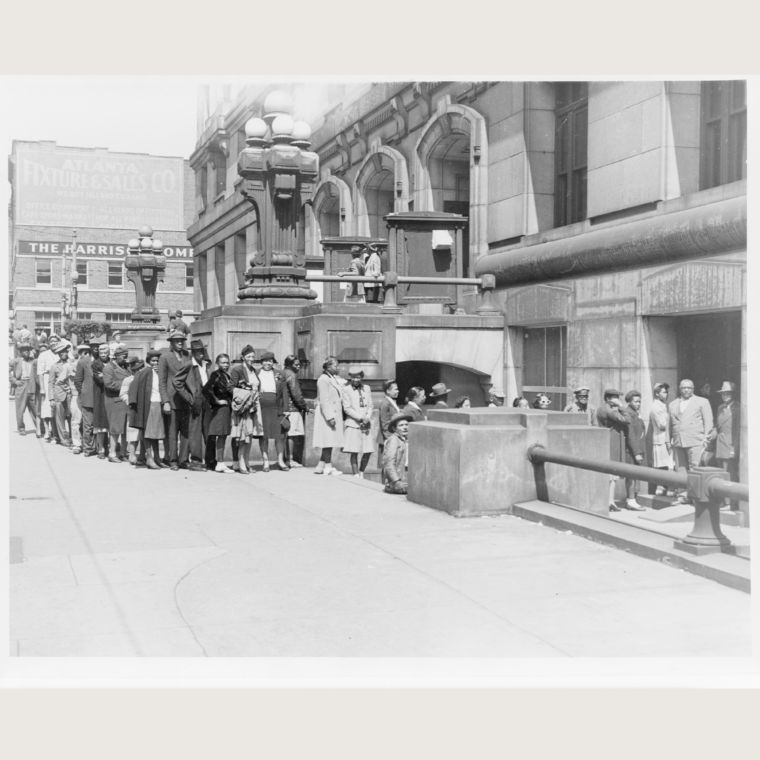
Voter Registration
After the Supreme Court struck down the white primary 1946, more than 20,000 African Americans in the city of Atlanta registered to vote
Unidentified photographer, Atlanta, 1946. Courtesy Library of Congress.
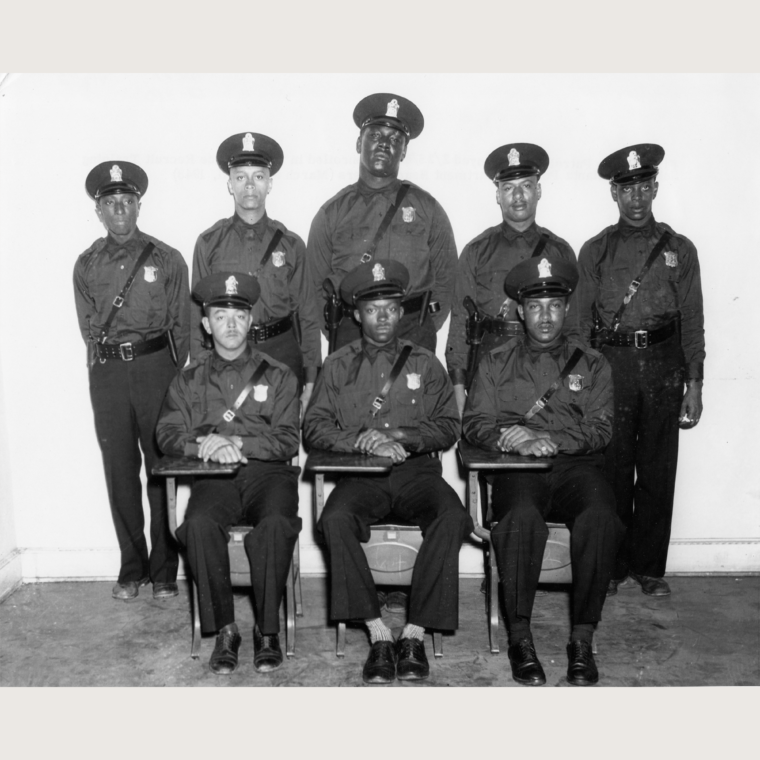
First African American Police Officers in Atlanta Police Department
In 1948, African American leaders used their growing political clout to pressure the city to hire eight black patrolmen to the Atlanta Police Department.
Unidentified photographer, Atlanta, 1948. Kenan Research Center at Atlanta History Center. Herbert Jenkins Photographs.
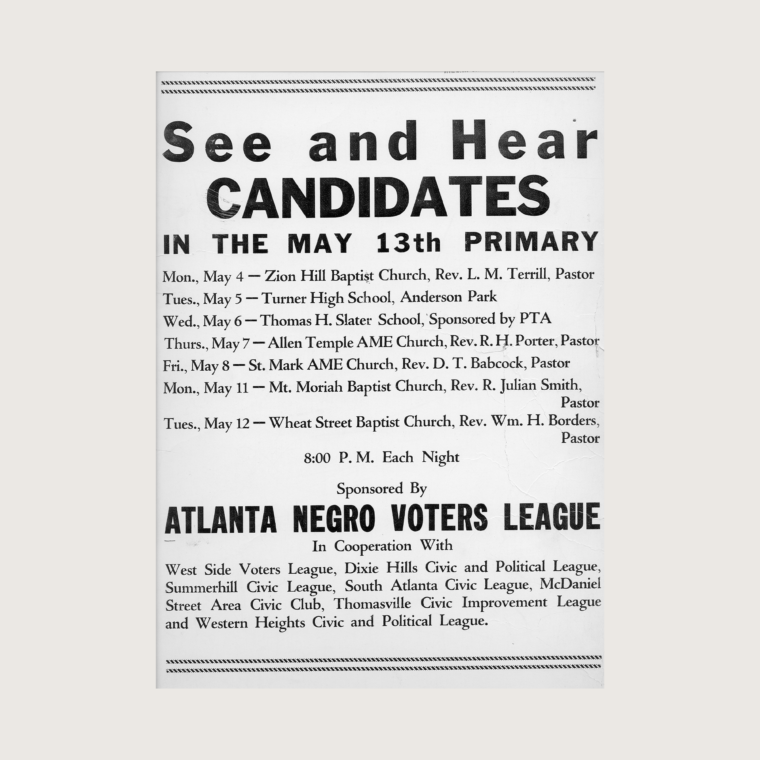
Atlanta Negro Voters League
The Atlanta Negro Voters League helped consolidate a powerful voting bloc and facilitated an alliance with white business leaders that dominated Atlanta politics for the next two decades.
See and Hear Candidates in the May 13th Primary. Kenan Research Center at Atlanta History Center. Austin T. Walden Papers.
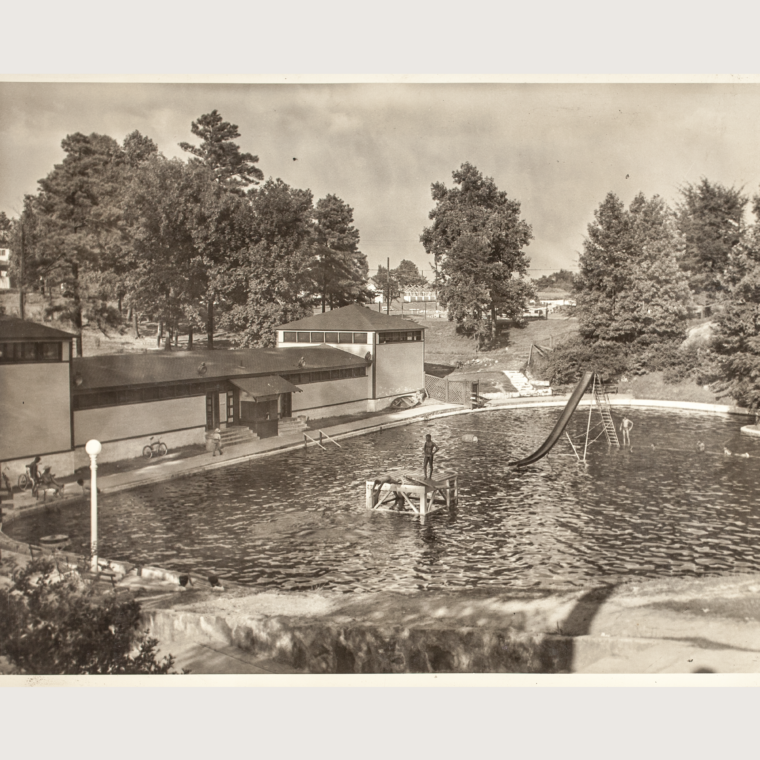
Washington Park
African Americans won hard fought victories in the 1950s to desegregate public spaces, such as parks, public transportation, and golf courses.
Unidentified photographer, Atlanta, circa 1950. Kenan Research Center at Atlanta History Center
Long, Rucker, and Aiken Family Photographs and Lithographs.
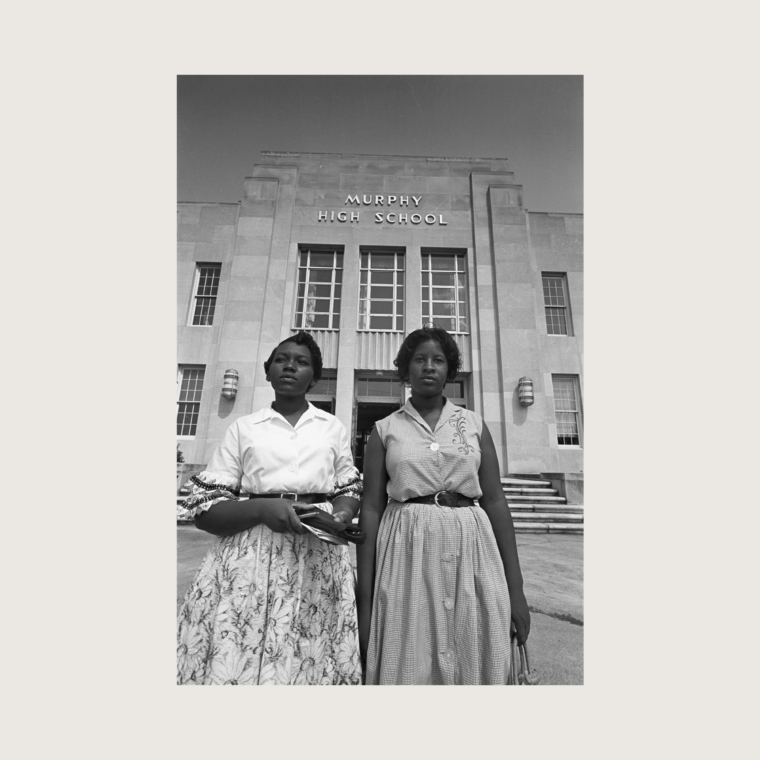
Martha Ann Holmes and Rosalyn Walton
Atlanta’s public schools began to desegregate in 1961, more than seven years after Brown v. Board of Education which outlawed segregation in public schools.
Bill Wilson, photographer, Atlanta, 1961. Kenan Research Center at Atlanta History Center. Bill Wilson Photographs.
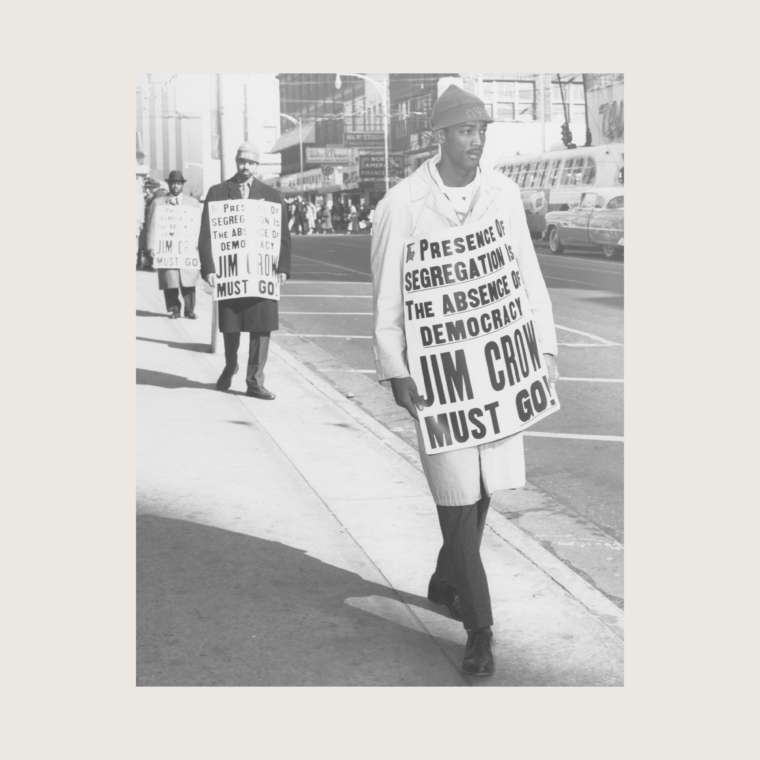
Atlanta Student Movement Protest
From 1960-1964, students attending Atlanta’s historically black colleges and universities pressed a more aggressive civil rights agenda to outlaw segregation in restaurants and hotels.
Unidentified photographer, Atlanta, 1960. Kenan Research Center at Atlanta History Center. William Stanford Sr. Photographs.
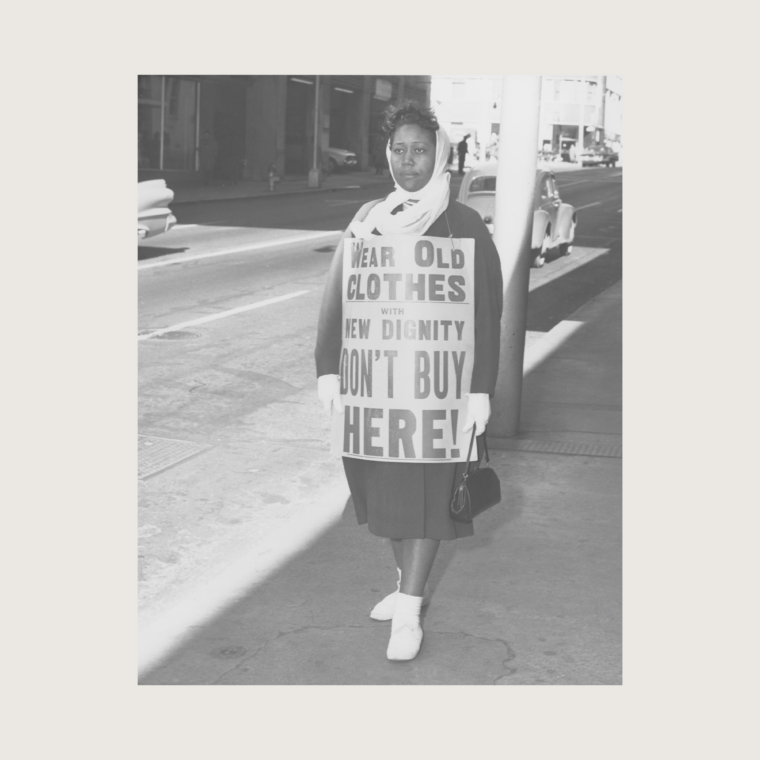
Atlanta Student Movement Protest
The Atlanta Student Movement’s pressure campaign of protests and sit-ins, along with similar efforts launched throughout the country led to the passage of the 1964 Civil Rights Act
Unidentified photographer, Atlanta, 1960. Kenan Research Center at Atlanta History Center. William Stanford Sr. Photographs.
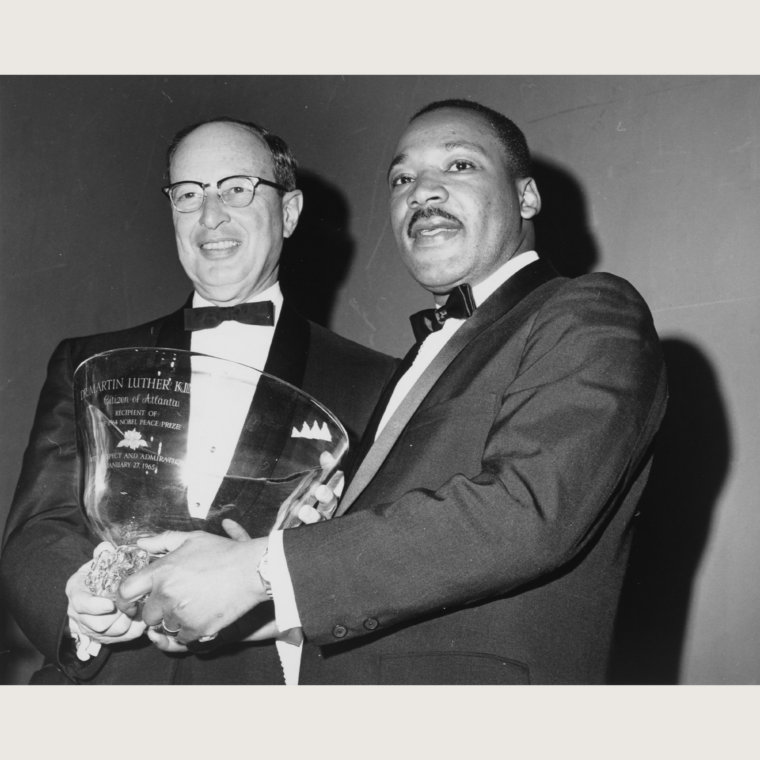
Martin Luther King Nobel Peace Prize Dinner
In 1964, Dr. Martin Luther King Jr. was awarded the Nobel Peace Prize for his non-violent struggle to obtain equal protection under the law.
Unidentified photographer, Atlanta, 1965. Kenan Research Center at Atlanta History Center
Atlanta History Photograph Collection.
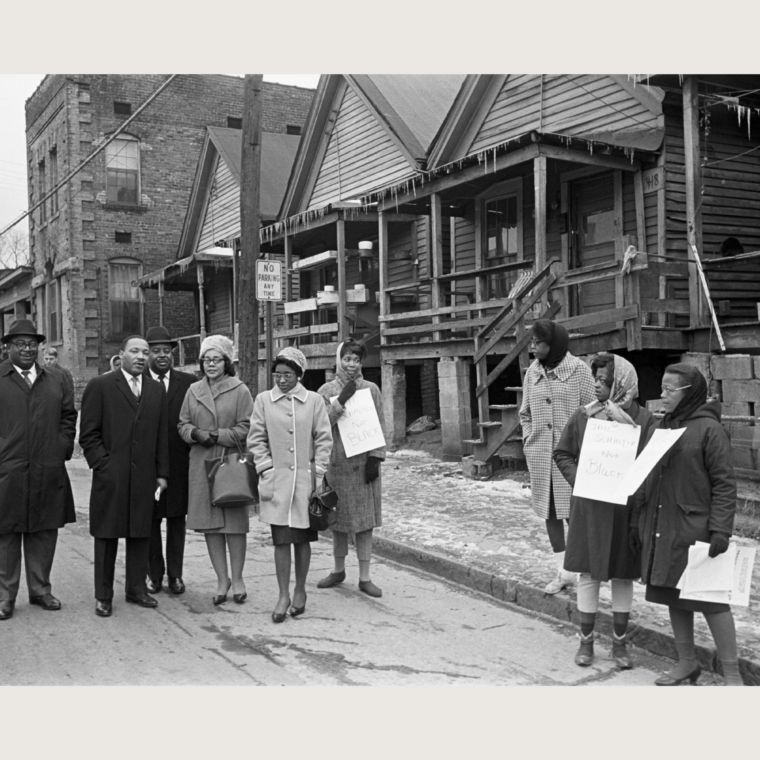
Vine City Protest
Martin Luther King Jr. and other civil rights leaders protest the jailing of poverty activist Hector Black in Atlanta’s Vine City community.
Bill Wilson, photographer, Atlanta, 1966. Kenan Research Center at Atlanta History Center. Bill Wilson Photographs.
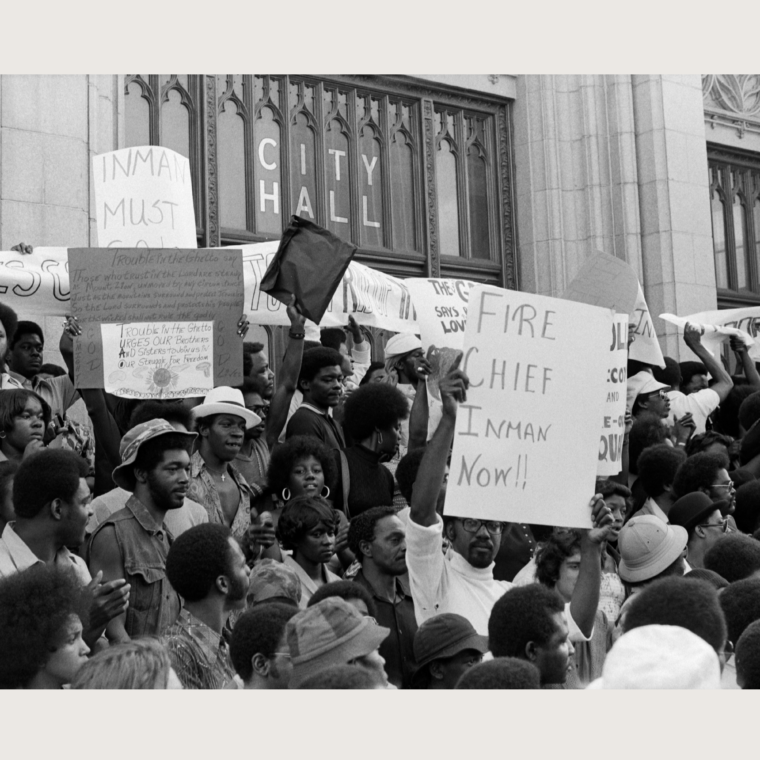
Brotherhood March
More than 1,500 Atlantans marched in protest of Atlanta Chief of Police John Inman in May 1974 in response to complaints of racism and police brutality.
Unidentified photographer, Atlanta, 1987. Kenan Research Center at Atlanta History Center. Southline Photographs.
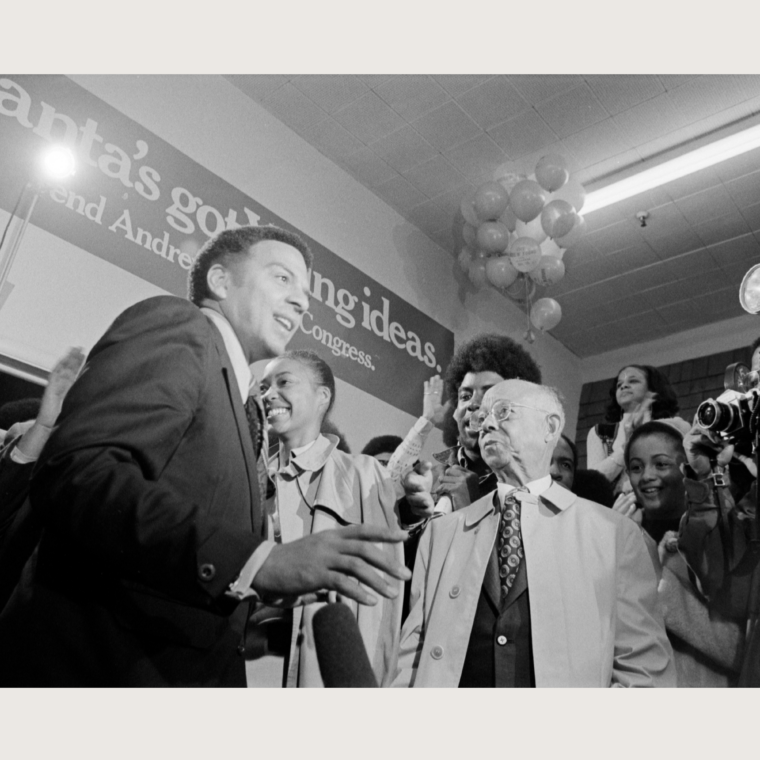
Andrew Young Election Celebration
A veteran of the Civil Rights Movement, Andrew Young was the first African American from Georgia to be elected to the United States Congress since Reconstruction.
Boyd Lewis, photographer, 1972. Kenan Research Center at Atlanta History Center. Boyd Lewis Photographs.
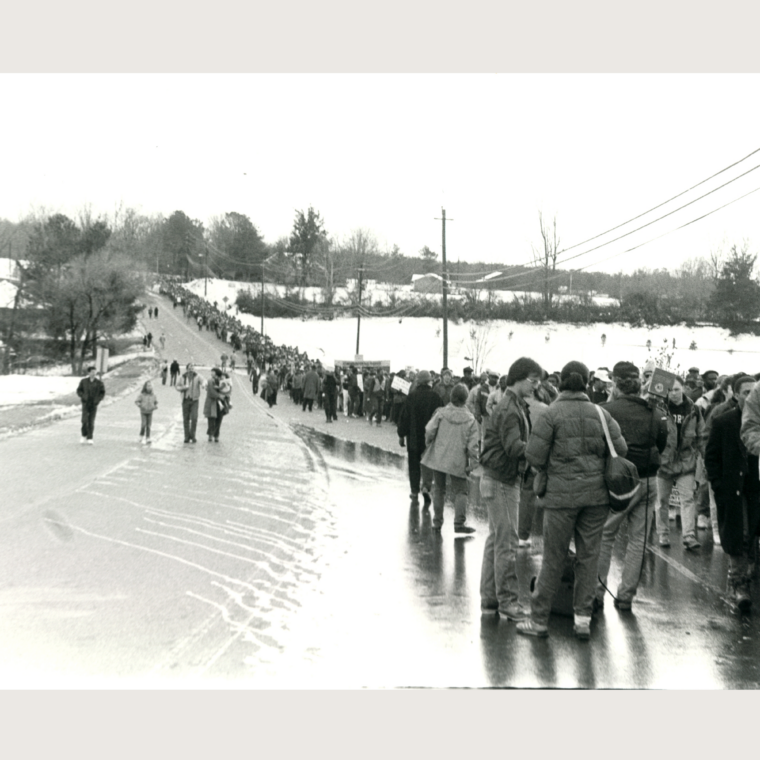
Protest Against Atlanta Police Chief John Inman
In one of the largest civil rights protests in America since the 1960’s, tens of thousands of marchers descended on Forsyth County to highlight the county’s starkly racist history.
Boyd Lewis, photographer, 1974. Kenan Research Center at Atlanta History Center. Boyd Lewis Photographs.
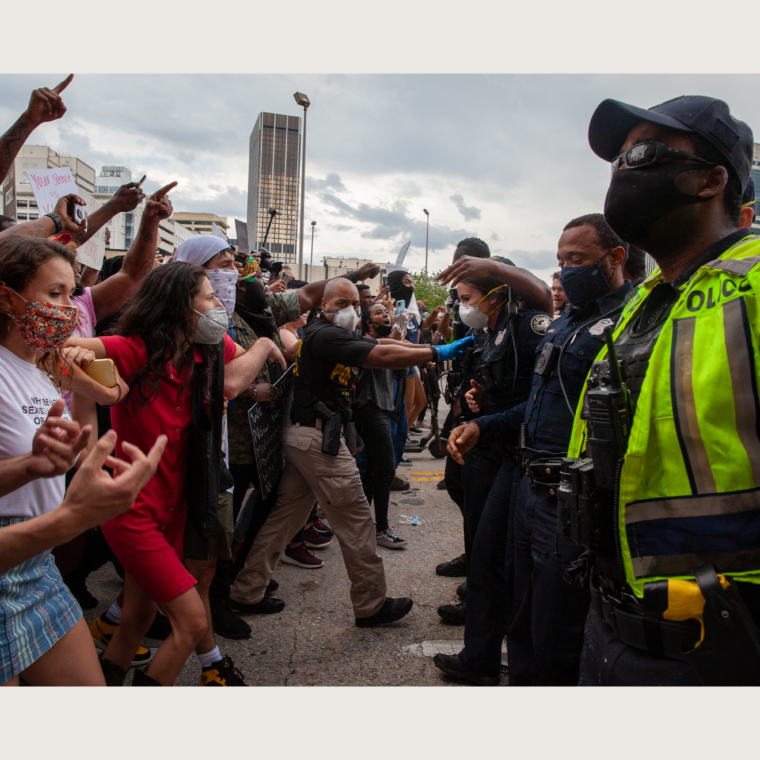
George Floyd Protest
Atlantans reacted in outrage after the killing of George Floyd by a white police officer in Minnesota.
Nathan Posner, photographer, 2020. Kenan Research Center at Atlanta History Center. Nathan Posner Photographs.
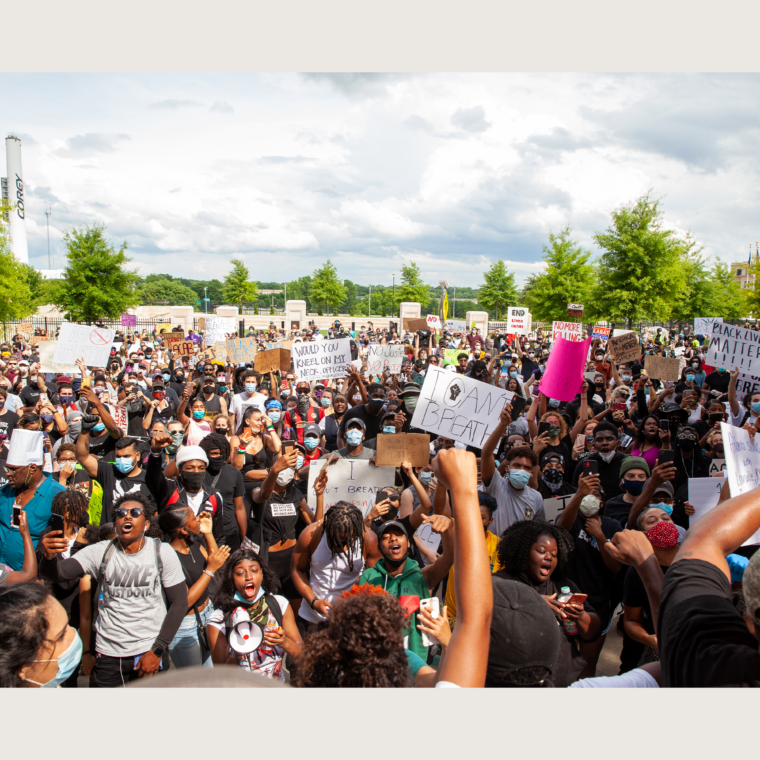
Black Lives Matter Protest
The widespread protests were also a reaction against indifference to poverty and systemic racism throughout American society.
Nathan Posner, photographer, 2020. Kenan Research Center at Atlanta History Center. Nathan Posner Photographs.
Related Content. Learn More.
-
Exhibition
This online exhibition explores the African American struggle for full citizenship and racial equality that unfolded in the 50 years following the Civil War.
-
Exhibition
Atlanta History Center is home to one of the nation’s most comprehensive collections of Civil War memorabilia including a growing number of rare objects identified specifically with African American USCT soldiers and regiments such as a canteen, swords, a rifle, brass drum, knapsack, Bible, badges, a Medal of Honor, and a USCT flag.
-
Story
In August 2020, we commemorate the passage of the Nineteenth Amendment which guaranteed American women the right to vote. However, this was not an inclusive victory.
-
Story
Throughout the civil rights movement in Atlanta, soul food restaurants were hubs of change where civil rights leaders could convene, converse, and strategize, and in times of terror and violence, these places were retreats where leaders could plan their next tactical moves.